The name Ca Mau originates from the Khmer people, called Tưk-Kha-mau, meaning Black water. This is due to the blackish color of the water caused by the fallen leaves of the melaleuca forests. Since the 16th-17th centuries, Vietnamese, Chinese, and Khmer migrants have come to settle in this area, forming the Ca Mau commune. Through the ups and downs of the country's history, this land became Ca Mau Province, the southernmost tip on the current map of Vietnam.
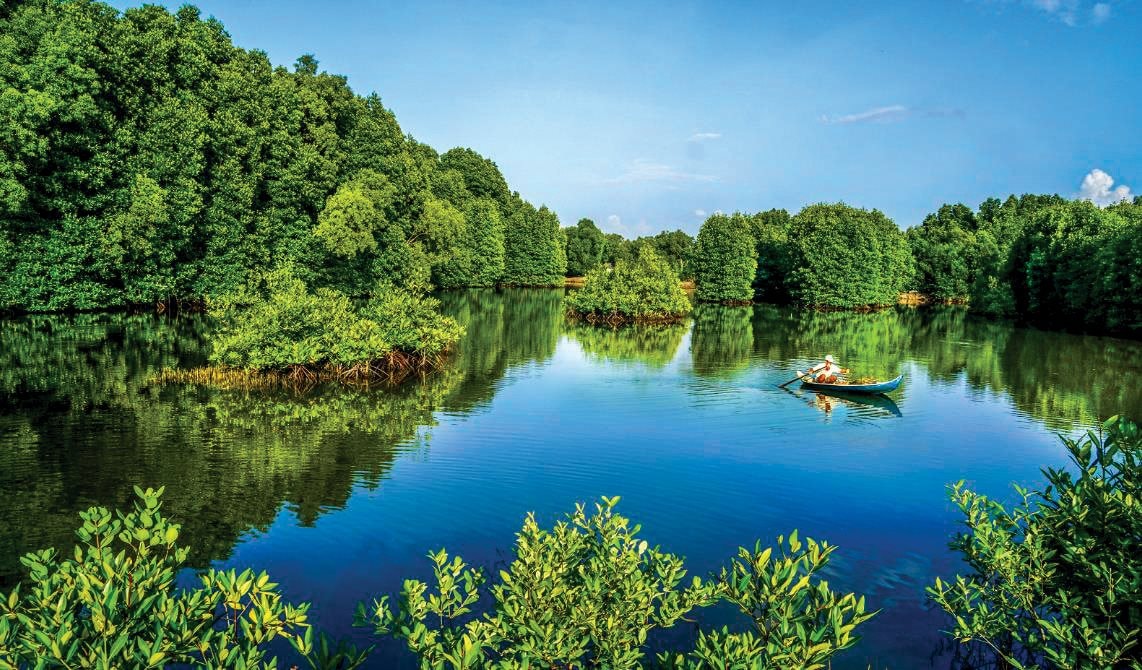
Talking about Ca Mau, go to Ganh Hao market and listen to the Hoai Lang melody
Ganh Hao is located in two provinces, one side is Ganh Hao town in Dong Hai district, Bac Lieu province, and the other is Tan Thuan commune in Dam Doi district, Ca Mau province. The Ganh Hao River is famous for its sweetness in the romantic music of composer Vu Duc Sao Bien, each section carrying its own beauty. Visitors to Ca Mau often sit on boats to admire closely packed houses, ferry docks, and workshops along the river. To see the water turn reddish-brown like the land before the river meets the sea.
On both sides of the river, despite the deep green color of reeds and rushes spreading far and wide, there are still distant villages and boats carrying goods, vividly colored, lively and peaceful with the river's way of life. It is not as sad and gloomy as the stories often written by writer Nguyen Ngoc Tu. Here, although there are lives dependent on the deep river, the river also doesn't betray humans, and the products it brings become specialties of the region, such as dried shrimp and dried fish.
The floating market on the Ganh Hao River is also a unique feature of the river region. The bustling floating market in the morning with a variety of colors from the fruits of the Southern orchards, and unlike the lively morning, the evening floating market is peacefully beautiful in the scenes of daily life. A few quiet boats clearly hear the sound of gentle waves, the image of mothers cooking dinner and children fishing by the river creates a characteristic scene of the river region that impresses tourists.
Visitors to this land seem to share the same perception; they must take a boat on the Ganh Hao River, observe the scenery and life on both sides of the river, and listen to the song "Ganh Hao night listens to the Hoai Lang melody” to truly feel the river's emotions, the solitude of the woman deeply ingrained in the soul. One can imagine that on some quiet night, composer Vu Duc Sao Bien might also drift on the river listening to the tune of "Da co hoai lang" by the late musician Cao Van Lau, creating that masterpiece of a sentimental ballad.
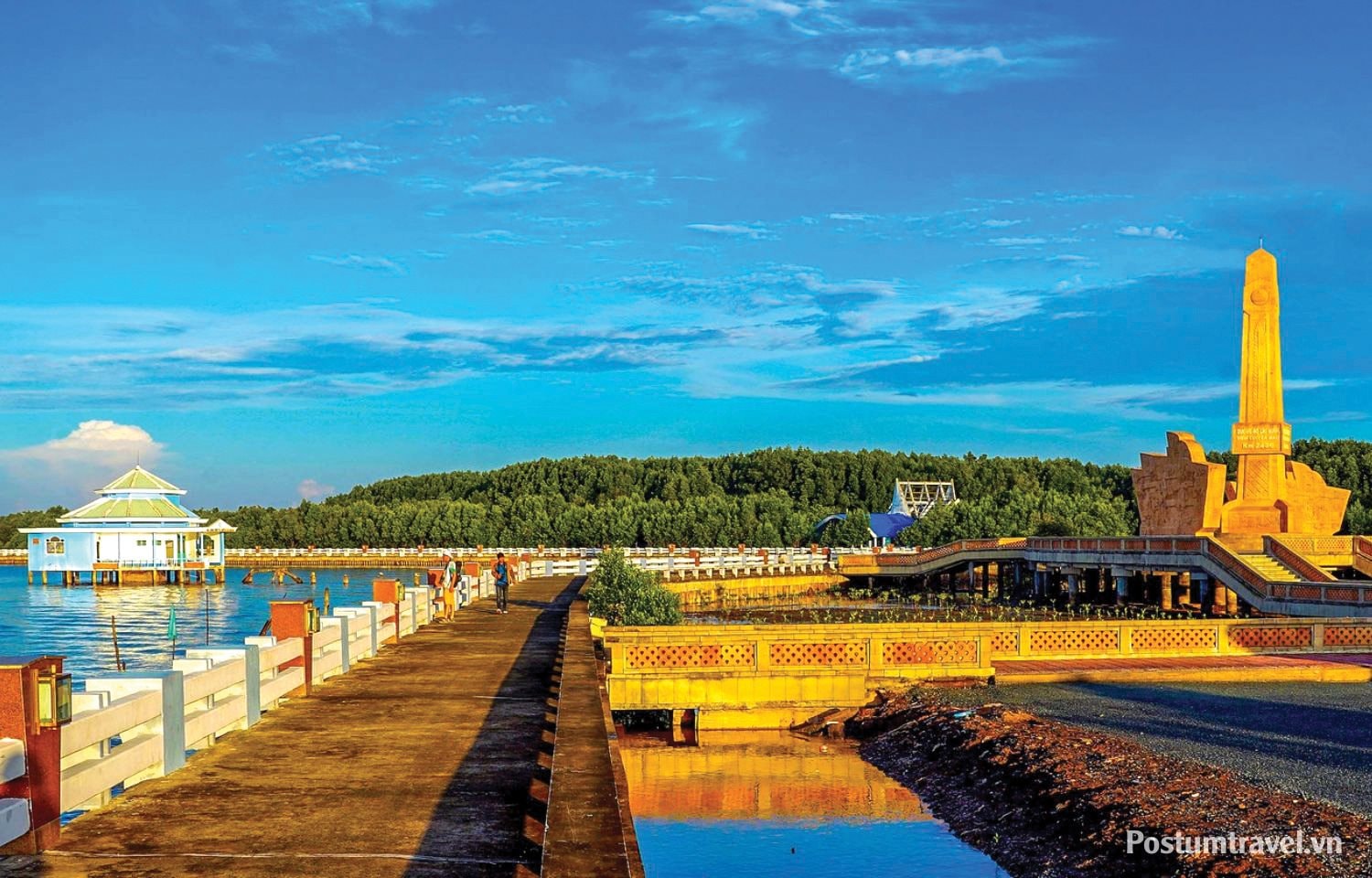
U Minh Ha National forest - the forest of the Southern land
The U Minh Forest is originally a renowned forest depicted in the novel "Southern Land Forest" by writer Doan Gioi. The author introduces readers to a land that is fertile, full of advantages, yet also teeming with the dangers of the wild.
When visiting Ca Mau and exploring U Minh Ha Forest, the homeland of Uncle Ba Phi, visitors are mainly transported by waterways, often in small boats suitable for navigating the rivers and channels, fittingly named the "river and water region." Crossing rivers with humble names like Trem Trem, Cai Tau, Doc River, visitors arrive at the U Minh Ha mangrove forest. U Minh Ha Mangrove Forest, located in Ca Mau, adjoins U Minh Thuong Forest in Kien Giang Province. It covers an area of approximately 35,000 hectares, featuring a mangrove ecosystem with 6 months of saltwater inundation and 6 months of dry periods.
U Minh Ha Forest is entirely different from other highland forests, from its vegetation carpet to its distinctive wildlife. Being a flooded forest, it is home to various fish species, both freshwater and brackish, as well as diverse animals such as deer, monkeys, wild boars, civets, and notably pythons and snakes.
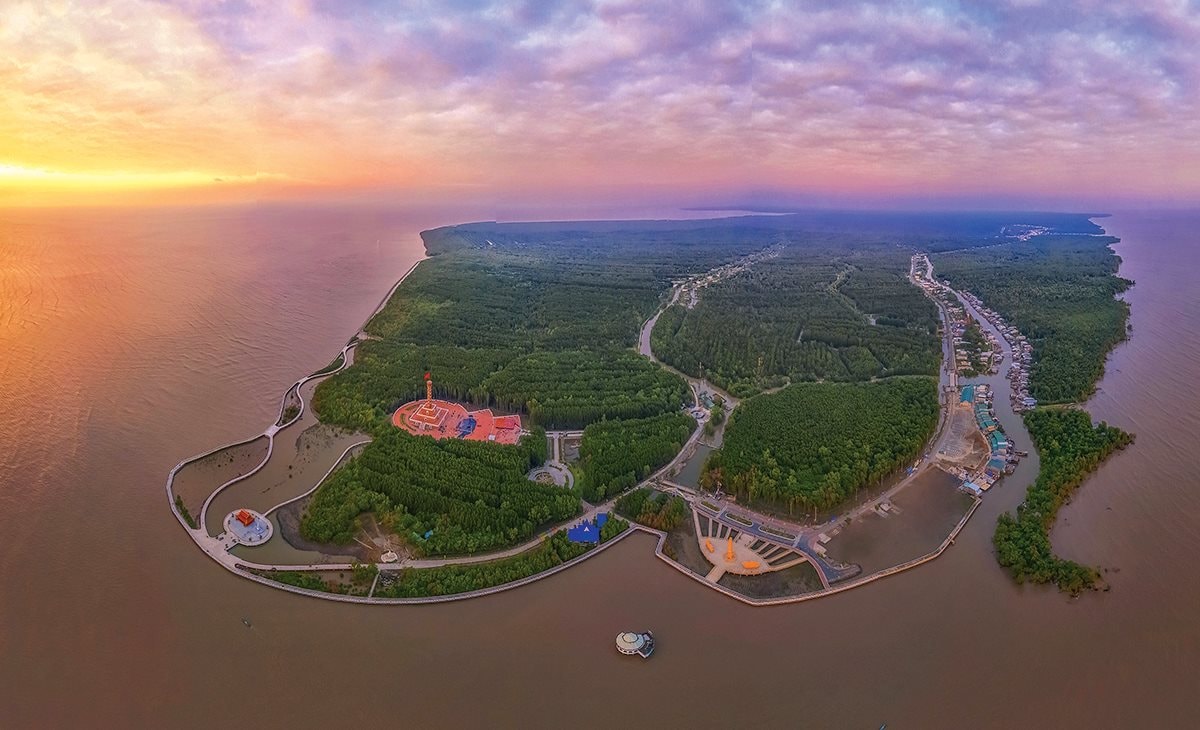
Especially noteworthy among the unique fauna of U Minh Forest is the bee. Bees under the mangrove canopy extract nectar from the golden blossoms of the mangrove flowers to build their hives. During the honey harvesting season, visitors can join locals in collecting honey, enjoying freshly cut young honeycomb with a bit of mangrove honey to experience its sweet and refreshing taste melting on the tongue.
U Minh Ha Forest also rewards the locals with specialties after each fishing trip. Grilled fish with a fragrant aroma, sweet and tasty, paired with fish sauce hotpot cooked with freshly picked sponges, water lilies, wild vegetables, field mice dishes, or bon bon salad are all delicacies that leave an unforgettable impression on visitors, making them enamored with this humble yet rich land.


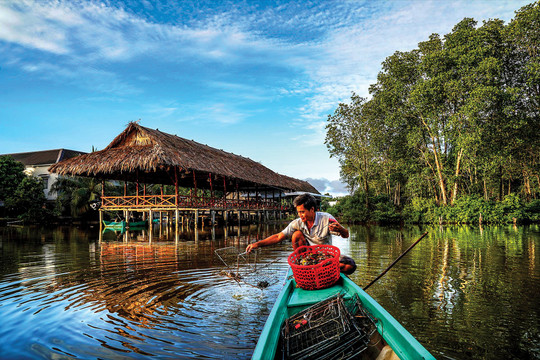


.png)
.png)
.png)


.png)
.png)





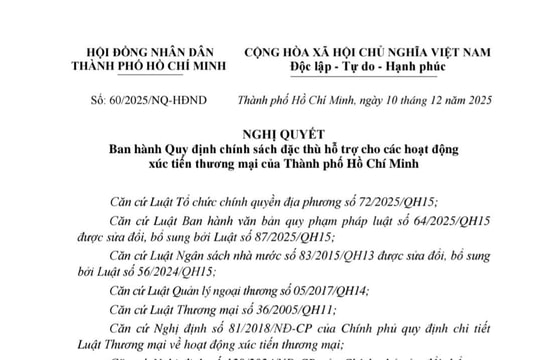
.png)

